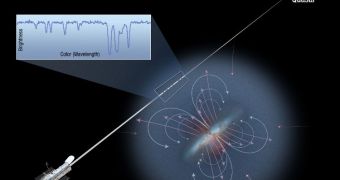One of the keys to the long lives of galaxies is the creation of new stars with the passing of eons. This is done through a complex process, which involves the recycling of both hydrogen and heavier elements. Now, these mechanisms are much better understood, thanks to recent observations.
While Sun-like stars have lifespans stretching over as many as 10 billion years, more massive stellar objects only live for tens or hundreds of millions of years at the most. If galaxies did not recycle their materials, then they would look significantly different than they do today.
As it stands, galaxies can continue producing new stars – from their initial gas reserves and through recycling – for as many as 10 billion years after they begin forming. It is only after that time that it stops producing new stars. The remaining ones take a few billion years more to completely extinguish.
Using the NASA/ESA Hubble Space Telescope, a research team was recently able to analyze this cosmic recycling process, and publish its conclusions in three scientific papers. The works appear in the November 18 issue of the top journal Science.
The Hubble Cosmic Origins Spectrograph (COS) instrument was used to analyze the halo of the Milky Way, in addition to similar structures around 40 other galaxies. A number of ground-based telescopes were used to confirm the findings.
The studies were conducted by University of Notre Dame expert Nicolas Lehner, Space Telescope Science Institute investigator Jason Tumlinson and University of Massachusetts-Amherst astronomer Todd Tripp.
Experts identified impressive hydrogen gas clouds looming close to the Milky Way halo. These structures continuously fall towards the center of the galaxy, stirring up material and fueling star formation. There is currently enough material within to produce 100 million Sun-like stars.
But the recycling process is also heavily reliant on nova and supernova explosions for dispersing the gas – alongside heavier chemical elements – back into the halo, from which it can then return to fuel additional stellar formation.
But the team also discovered that galaxies can eject gas from within at such high speeds that the hydrogen can never again fall back into the galaxy. By escaping the gravitational forces pulling down on it, the gas disperses for thousands of light-years outside its former home.
Researchers say that further studies will make this mechanism even clearer. Understanding galactic life cycles is essential for figuring out how the early Universe looked like.

 14 DAY TRIAL //
14 DAY TRIAL //